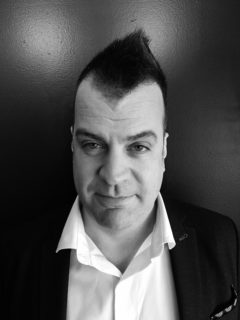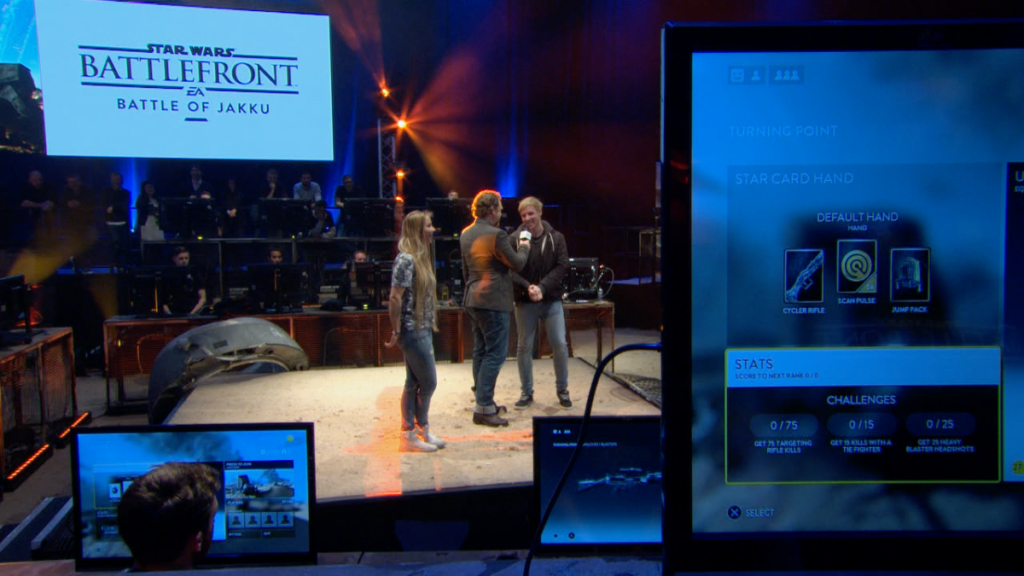With platforms such as Twitch, Facebook Live, Periscope, YouTube and others, live events are becoming into an increasingly popular way for brands to engage with audiences. Two UK companies, Attention Seekers and Done & Dusted, saw the growing potential of live events in the video game industry. The two companies recently announced that they have combined their expertise to form AD+D, based in Santa Monica, California.

Attention Seekers has a deep understanding of the video game space, having created bespoke video content for the industry. Done & Dusted is renowned for its work on spectacular live shows such as the Victoria’s Secret Fashion Show, the London 2012 Olympics Opening and Closing Ceremonies and tours for artists such as U2 and Katy Perry. By combining Done & Dusted’s expertise in creating live events with Attentions Seekers’ experience and credibility in the gaming world, AD+D will take live video game events such as consumer experiences, media briefings and eSports competitions to a whole new level.
AD+D co-owners, Phil Tucker and Simon Pizey, spoke to [a]listdaily recently about the formation of the company. Tucker is an executive producer at AD+D and CEO of Attention Seekers. Pizey is the joint CEO of AD+D in addition to being the CEO of Done & Dusted. The two are joined by Jason Wiltshire, executive vice president at AD+D. Together, they will bring a new level of flash and professionalism to gaming events, developed from a gamer’s standpoint.
What are AD+D’s goals?
[Tucker]: This exciting evolution in the video game industry is that the live space is becoming more valuable. We’ve seen audiences that are en masse and look to the calendar year to gather, and there are many more opportunities game companies can have in generating meaningful moments that are above where their normal marketing beats would sit. We are looking to empower the game industry and bring our professionalism to help understand what is true authenticity when it comes to creating live moments. It’s not just about taking something that has worked traditionally on television or what would have worked in a standard touring event format—it’s about taking this time to invent new interesting formats that will build to a bigger moment where we place live engagement at the front and center.

Can you describe what this new format might be like?
[Wiltshire]: We’re all gamers, and that allows us to bring that authenticity into projects because we look at it from the gamer’s point of view as well as our producer’s. Whether it’s media briefings, game launches or competitive gaming, we’re always thinking about it from the gamer’s standpoint.
[Pizey]: One thing that will become an even more important part of the narrative building to these live moments will be the gamer’s journey and the storytelling that fits behind a lot of the players. Whether that’s for competitive gaming, eSports, there’s a whole array of storytelling mechanics that are currently not used within the gaming industry. It’s not just about rewiring the events to become more engaging and taking some of the tricks D&D put together in delivering live stage shows, but also in creating more of the preamble and promo building up to these events—through which we can start to develop meaningful methods of engagement that would end go up on television or Twitch.
[Tucker]: The real opportunity is with the gamers at home and the max views online. How do you think about them? How do you entertain them? How do you give them what they want? I think, more than ever, there’s an appetite for creation in this space while keeping authenticity, because we know gamers see through people making content for them that don’t understand games.

This year featured a number of live gaming events, including EA Play. What is the video game industry missing out on?
[Pizey]: I think it’s doing a good job of talking to its core audience. One of the important factors when the game companies invest so heavily in establishing these events is letting it talk to the core audience—let it become a place of gathering and celebration and show competitive gaming. But then also acquire an audience. Live is a great way of capturing the imagination and creating that “circus comes to town” moment. We all know that video gaming is intertwined within our lives, but these are great opportunities for gaming companies to make a real show that is engaging to an audience that they might not otherwise get to connect with.
We offer a level of elevation that would make that event reach out to other broadcast outlets or connect with a broader audience. We love what the games industry is doing—they’re fantastic steps and a real empowerment—but we believe we can add another layer to help make more of those moments.
[Tucker]: I think there’s a huge opportunity there. Yes, eSports is coming on stride, and all the game companies are putting on bigger and better eSports activations, but we still look at the percentage of gamers. You look at some of these big AAA titles and they have a massive audience, and the amount that participates on the eSports side of things is small percentage—whether it’s viewing and certainly when it comes to playing. The core eSports model is very often what’s applied to these big mainstream titles when actually, there’s opportunity for ramping up entertainment and aiming it at the more mainstream audience.
How do you grow a Twitch, YouTube Live or Facebook Live broadcast to a broader audience?
[Tucker]: I think there are lots of ways to do that. We see lots of live activations that aren’t promos that are aimed at an audience beforehand to generate that groundswell of excitement. Also, it comes in the way that we approach content and how competitive gaming could be. Console games are accessible to a mainstream audience, but when it comes to a live eSports broadcast, “are they as accessible?” is the questions we should be asking ourselves. As part of the mainstream audience, what excites me? What’s my reason for watching? What’s my investment? I know, when I go and watch a football match this evening, that there’s investment, narrative and entertainment there.
What are thoughts on VR livestreaming?
[Tucker]: VR is a very exciting space. We’re currently working on a VR project that allows us to have a mixed reality live studio space. So, when you look at that room, it has that “wow” impact. It offers those who are watching, either in the room or from a remote location, a varied experience within the program. You’re talking to enhance that layer of experience.
[But] we’re all hoping that we take our time with VR, and it’s not a desperate rush to create a gimmick that goes down too soon. We ultimately believe that VR offers a valuable experience to live engagement, so you want the format to have a consistency and an experience that you can trust and return to.
[Wiltshire]: VR is great, but the install base isn’t huge from the live events point of view. But it’s getting bigger all the time, and it’s certainly on our radar.
[Pizey]: In my head, I think there’s no hurry on it. I’m really interested in seeing what happens next year, but I don’t feel that we necessarily need to be at the vanguard of VR. I’m quite happy to be a bit of a spectator and see where it’s going because it’s a slightly Wild West, where everybody is chucking stuff at the wall to see what sticks. Some bits that I’ve been involved with work and some not so much. The next year is going to be fascinating.

